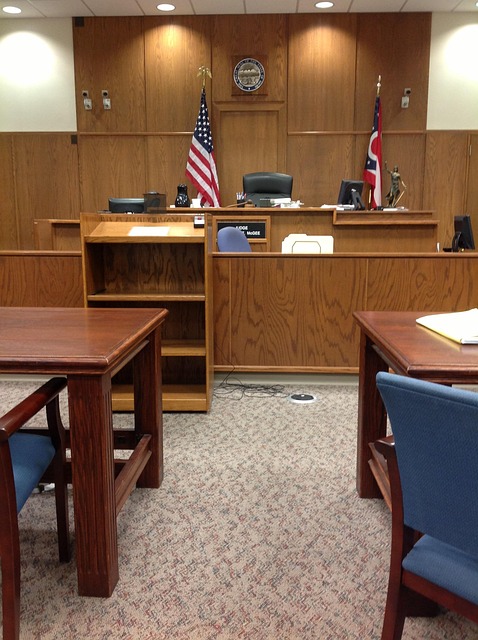Navigating Legal Complexities: Plea Bargaining Pros and Cons for Defendants

Healthcare compliance experts steer institutions clear of legal pitfalls in a complex web of regulat…….
In the intricate web of criminal justice systems worldwide, plea bargaining stands as a pivotal strategy that shapes outcomes for defendants. This process, where a defendant pleads guilty to a lesser charge in exchange for a reduced sentence or dismissal of other allegations, is a complex dance between legal tactics and strategic decisions. The article delves into the multifaceted nature of plea bargaining, exploring its benefits and drawbacks from the perspective of defendants. By examining various facets, from historical roots to global trends, economic implications, and technological influences, we aim to provide an insightful guide for understanding this critical aspect of criminal procedure.
Definition and Core Components:
Plea bargaining is a negotiation process between a defendant and prosecutor, facilitated by a judge in many jurisdictions. It involves the defendant pleading guilty or no contest to one or more charges, often with the agreement of the prosecution to amend or drop other allegations. The core components include:
Historical Context:
The roots of plea bargaining trace back centuries, evolving from common law practices in English courts. Over time, it has transformed into a structured process aimed at efficiently managing criminal cases. In the modern era, plea bargaining became more formalized, especially with the rise of jury trials and increasing case volumes, allowing for quicker dispositions.
Significance:
Plea bargaining serves multiple purposes within the criminal justice system:
The global landscape of plea bargaining varies widely, influenced by cultural, legal, and societal factors. Key trends include:
| Region | Plea Bargaining Practices | Notable Features |
|---|---|---|
| North America | Widely practiced, with a strong emphasis on negotiation. | High volume of cases, often leading to complex plea agreements. |
| Europe | Varied adoption across countries, with some embracing it extensively. | Differing legal traditions impact the structure and acceptance. |
| Asia Pacific | Generally less common, but growing in certain jurisdictions. | Cultural and religious beliefs influence attitudes towards guilty pleas. |
| Middle East | Significant usage, often with unique cultural nuances. | Some Islamic law systems incorporate plea bargaining within their frameworks. |
Regional Differences:
The economic implications of plea bargaining are multifaceted, impacting both public finances and private entities.
Market Dynamics:
Investment Patterns:
Economic Impact:
Technology has revolutionized many aspects of society, and plea bargaining is no exception. Key advancements include:
Impact and Future Potential:
The legitimacy and fairness of plea bargaining heavily rely on policies and regulations that govern its practice. Key legal frameworks include:
Influence on Practice:
Despite its benefits, plea bargaining faces significant challenges and criticisms that hinder its effectiveness and legitimacy.
Main Issues:
Proposed Solutions:
Case Study 1: The “Plea Bargain Revolution” in the U.S.
In the 1970s, the U.S. experienced a surge in felony arrests, leading to a shift towards plea bargaining as a primary strategy for case disposition. This era, often referred to as the “plea bargain revolution,” saw an increase in the use of mandatory minimum sentences and plea agreements. The approach aimed to reduce prison populations but faced criticism for contributing to racial disparities in sentencing.
Key Takeaways:
Case Study 2: A Successful Plea Bargaining Program in Sweden
Sweden’s criminal justice system stands out for its emphasis on rehabilitation and diversionary programs rather than incarceration. In some regions, they have implemented a “pre-charge negotiation” model, where prosecutors and defense attorneys negotiate potential outcomes before formal charges are filed. This approach has led to high rates of successful diversions, reducing the need for trials.
Lessons Learned:
The future of plea bargaining is shaped by evolving legal landscapes, technological advancements, and societal shifts. Potential growth areas include:
Emerging Trends:
Plea bargaining, a cornerstone of criminal justice systems worldwide, presents a complex interplay of legal, economic, and social factors. Understanding its pros and cons is essential for policymakers, legal professionals, and scholars alike. As societies evolve and technology advances, plea bargaining must adapt to meet the changing needs of justice administration while safeguarding individual rights and public interests.
By examining global trends, economic implications, technological innovations, and policy frameworks, this article has provided a comprehensive overview. The case studies offer practical insights into successful applications, highlighting the importance of context and adaptability in plea bargaining strategies. As we look ahead, the future prospects suggest a path toward more efficient, fair, and technology-driven approaches, ensuring that plea bargaining remains a vital tool within the criminal justice system while mitigating its inherent challenges.
Q: What is the difference between a guilty plea and a no contest plea?
A: A guilty plea means the defendant admits guilt to the charged offense. In contrast, a no contest plea (or nolo contendere) signifies that the defendant does not dispute the charge but neither admits nor denies it, allowing for potential benefit in sentencing.
Q: Can a defendant change their mind after entering a plea bargain?
A: Yes, defendants can usually withdraw their pleas before sentencing if they meet certain criteria, such as demonstrating a fair and just reason. However, withdrawal may be denied if the prosecution objects or if the court finds that the defendant engaged in bad faith conduct.
Q: How does technology impact plea bargaining negotiations?
A: Technology streamlines case management, enhances digital evidence analysis, facilitates online court filings, and offers potential for AI-assisted sentencing. These advancements can improve efficiency but also raise ethical considerations regarding data privacy and algorithmic bias.
Q: Are there any international standards for plea bargaining practices?
A: While there are no universal standards, international treaties and agreements often mandate due process rights, influencing how plea bargaining is conducted in signatory nations. The United Nations’ Standard Minimum Rules for Treatment of Prisoners guide criminal justice systems, emphasizing fairness and respect for human dignity.

Healthcare compliance experts steer institutions clear of legal pitfalls in a complex web of regulat…….

Regulatory fraud laws target intentional deception. Plea bargaining offers defendants control over o…….

Plea bargaining provides a strategic route for defendants facing public corruption charges, balancin…….

Litigation Support Services act as game-changers in legal strategy, offering comprehensive assistanc…….

Criminal defense attorneys play a crucial role in navigating complex criminal law, especially in hig…….

Plea bargaining provides defendants facing legal charges with swift resolutions and reduced penaltie…….

Plea bargaining offers strategic advantages for defendants in RF Securities cases, reducing penaltie…….

Corporate Crime Investigations uncover illegal business activities, with plea bargaining as a strate…….

Plea bargaining, a key aspect of criminal justice, provides defendants with options to reduce charge…….

Understanding Consumer Protection Laws and Suits is vital, as they safeguard consumers from unethica…….